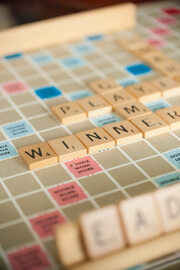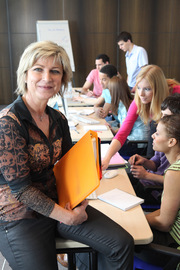9 Thoughtful Gift Ideas for Your Child
In today’s world, where everyone is obsessed with consumerism, it is maybe time to take a step back and curate a few thoughtful gifts for your children. The Australian Toy and Gaming industry is $586 million in 2022 and has grown faster than the country’s economy, reports Ibis Research.
So as a concerned parent, it is time to think about how you can make sure your gifts to your children help in their physical, mental, and emotional well-being.
Here, we have suggested six gift ideas for your kids which take care of them, help them grow their imagination, and also let them enjoy.
1. A Gaming Chair
For our children, video games are an important part of life. As parents, it is natural to feel apprehensive about the long hours they spend on the console. On the other hand, the gamer in your child will probably want video games or gaming accessories for Christmas. Try gifting them a gaming chair to ensure they are not plagued with back or neck pain from spending long hours playing games.
Australians have spent nearly AUD 4 billion playing video games in 2021 alone. Mobile games accounted for AUD 1.51 Billion, the rest being on a console or PC. Like your fellow Aussies, if your child spends close to 90 minutes playing a video game, you should be very careful about the gaming chair you buy.
We suggest you go through online reviews to find the best gaming chair for your child. Choose one based on ergonomics. Check the color and style preferences of your child so that it is used by them.
2. An Outdoor Experience
Children got tired of staying indoors all the time, especially during the Covid-19 lockdowns. In a study by the Australian Bureau of Statistics in 2021, 22% of Australians felt their mental health was taking a turn for the “worse” during the lockdowns.
If it is possible for you, try to treat your child to a short trip somewhere in Australia. You can opt for a beach stay or choose to take your child camping. You may also choose to spend a couple of days exploring the zoo and other interesting places in your community. What matters to your child is the time you spend with them and the quality of the same.
3. An Aquarium or Terrarium
Terrariums and aquariums are great gift ideas. They’re beautiful and easy to care for. They will give your child the opportunity to create their little ecosystem without needing too much room.
As a low-maintenance gift idea, terrariums are a great for anyone who loves plants. They’re also a great way to get your kids interested in gardening. Because they’re enclosed, they don’t need much maintenance. They’re an ideal gift for your child if they would like to have a slice of nature in their rooms.
You can give your child the gift of seeing their favorite animal in real life. An aquarium lets you do that, and it looks great on any shelf or table. You can spend some time every day with your child feeding the fish and watching them feed. It is a ritual that will engage your child and help you both witness something soothing and magical without spending time in front of a screen.
4. Battery-Powered Ride-On Car
For a truly extraordinary gift for your child, one that will certainly wow them, battery-powered Ride-On Cars are becoming increasingly popular for kids. It’s not uncommon to see these miniature toy cars cruise the sidewalks throughout neighborhoods. Sure to ignite any child’s imagination and unleash a world of fun-filled adventures, these units come in a variety of captivating designs and are equipped with kid-friendly features.
Whether your child dreams of racing through imaginary landscapes or emulating their favorite grown-up drivers, this mini vehicle idea provides a safe and thrilling experience. They also promote outdoor play. As kids zoom around the neighborhood or backyard, their sense of independence and confidence grows.
And let’s face it, someday they will be driving their own real-life cars. So, why not allow them to learn safe driving habits in a Battery-Powered Ride-On Car? It’s not just a toy; it’s a thoughtful gift that sparks a sense of exploration in young hearts.
5. Books
Books are a great gift for kids because they help develop intellectual curiosity and help kids build their vocabularies. They also provide an opportunity for children to learn about themselves and the world around them, and they can be a source of comfort in times of stress or anxiety.
You can buy board books for babies who haven’t learned to read yet. These books have thick pages that are easy to turn, and they usually feature bright colors and simple pictures that can help entertain your little ones while they’re learning how to use their hands properly.
For older children who are just starting school, you might want to look into chapter books or storybooks that are aimed at their age group. These types of books tend to have more complex storylines than those designed for younger children, which makes them more engaging for older kids who are trying to get used to reading on their own for the first time.
We hope this article helps you choose a thoughtful gift that is both useful and fun for your child and suits your budget. We understand that you may have budget constraints at this point and may not be able to shop for all the presents on your child’s wishlist. What truly matters to your child is that you invested your time and effort in giving them something this festive season.
6. DIY Craft and Hobby Kits
DIY craft kits are excellent gifts for kids of all ages. They’re fun. Kids love to create things and put their spin on them. They enjoy the process of creating, which is something that they can’t get from just buying something at the store.
They’re educational. DIY craft kits teach children how to work with their hands and enjoyably use their imaginations.
They encourage creativity and problem-solving skills. By giving your child a DIY craft kit as a gift, you’re encouraging them to think outside the box and come up with creative solutions for completing their projects.
Make sure you spend an optimum amount and don’t divert funds from other important activities for your child, like dance or music lessons.
7. eBike
Electric bikes have been all the rage for adults. Now smaller versions for kids are set to provide children with the same experience. While ebikes provide electric assistance, they still require pedaling. This helps kids engage in physical activity and develop a healthier lifestyle.
With the electric assistance, kids can cover longer distances without getting as tired. This makes it easier for them to explore new areas or go on longer family bike rides.
Ebikes also promote reduced sedentary time. With the growing prevalence of screen time and sedentary activities, e-bikes provide an enjoyable way for kids to spend time outdoors, reducing the time spent in front of screens. E-bikes can be a great option for kids with varying levels of physical fitness or abilities.
8. Dinosaur Slippers
Some kids love clothing related gifts. Others think they are boring. However, when you combine practicality with fun the gift can be truly unique and thoughtful. Slippers offer cozy comfort for little feet. But slippers designed to look like your own personal pet dinosaurs add fun to every step your child takes.
At night when they slip out of their dinosaur slippers and crawl into bed, this new pair of dino friends become trusted companions who watch over the room while your little one sleeps. And when morning arrives, jumping out of bed will be that much more enticing with protection from the cold floor that awaits.
9 Lightsaber
Lightsabers have become as ubiquitous as droids in a galaxy far, far away, capturing the hearts and imaginations of fans young and old. These glowing wonders have skyrocketed in popularity faster than the Millennium Falcon making the Kessel Run. From epic duels in the backyard to impromptu Jedi training sessions in the living room, lightsaber toys have become the ultimate accessory for aspiring Padawans and seasoned Jedi Masters alike.
With a rainbow of colors to choose from, enthusiasts can embrace their inner Sith Lord or channel their inner Rey, creating a dazzling spectacle that’s more entertaining than a cantina band on Tatooine. Whether you’re battling the dark side or simply spicing up a dull Tuesday afternoon, the force is strong with these luminous playthings, making them a must-have for anyone looking to add a dash of intergalactic excitement to their daily adventures.
May the fun be with you!










